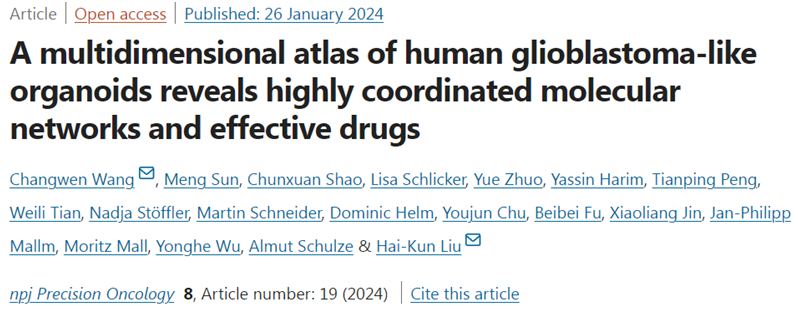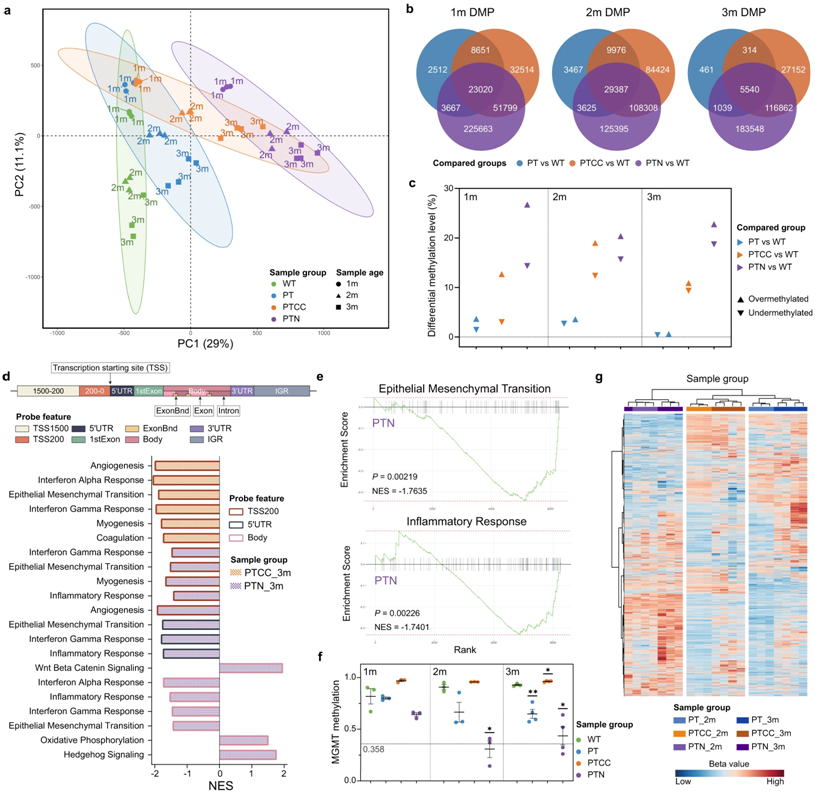
Source: BioValley
In a new study, researchers from institutions including the German Cancer Research Center and Shanghai University of Science and Technology in China used human stem cells to grow glioblastoma-like organoids (GLO) in the lab, It is a suitable model for studying the correlation between genetic mutations and molecular subtypes in glioblastoma.
While studying GLO, they found that the development of glioblastoma is characterized by a reprogramming of lipid metabolism. This could be the starting point for developing new drugs. The findings were published online January 26, 2024, in the journal npj Precision Oncology, The paper is titled "A multidimensional atlas of human glioblastoma-like organoids reveals highly coordinated molecular networks and Networks. effective drugs ".

Glioblastoma is the most malignant and dangerous of all brain tumors. A large number of studies have shown that glioblastoma cells have great heterogeneity. So far, however, extensive molecular knowledge has contributed little to improving the treatment of the disease.
To develop effective targeted therapies, scientists must first understand exactly which genetic mutations are present in cancer cells and what effect these genetic mutations have on cell signaling pathways. Such studies need to be used to model this process and to test possible drug candidates.
The commonly used PDX model is to transfer patient-specific tumor cells into mice, but this model is not well suited to studying the effects of individual mutations because they have very different genetic backgrounds. The same applies to classical tumor organoids grown from patient cells.
In the new study, the authors devised a solution: They used organoid models grown from human induced pluripotent stem cells (IPscs). They call it a glioblastoma-like organoid (GLO).
To mimic the properties of glioblastoma, they used CRISPR-Cas gene scissors to precisely turn off tumor suppressor genes in IPscs that are typically lost in glioblastoma patients. They were able to generate a set of GLOs exactly similar to the dominant mutant spectrum present in glioblastoma patients.
Haikun Liu, co-corresponding author of the paper, explains, "The known major molecular subtypes of glioblastoma are primarily defined by RNA expression or DNA methylation patterns, and there is no clear correlation between gene mutations and the molecular subtypes. These GLOs are ideal for deciphering the interaction between cancer-specific genetic mutations and molecular signatures."

Image from npj Precision Oncology, 2024, doi:10.1038/s41698-024-00500-5
For example, the authors were able to use these GLOs to show that mutations in the NF1 gene that are common in glioblastomas are responsible for the occurrence of the stromal subtype of this tumor, which has specific immunological properties. They also found that lipid metabolism, especially phospholipid metabolism, is activated in GLO. This is consistent with the lipid reprogramming activation they previously found in glioblastoma stem cells.
Changes in lipid metabolism have been shown to be a characteristic hallmark of glioblastoma, providing many previously unrecognized targets for new therapies. For example, they were able to show that the lipid-lowering drug lomitapide significantly inhibits the growth of certain GLOs.
Liu said, "The advantage of Lgos over other organoid technologies is that they are derived from IPscs with precisely identified mutations. They have proven to be a suitable model to study how genetic mutations determine functional heterogeneity and drug sensitivity in glioblastoma cells."
The authors hope to further assemble different GLOs and integrate other cell types, such as immune cells and/or normal nerve cells, into GLOs to better simulate glioblastoma in the future.
Reference materials:
Changwen Wang et al. A multidimensional atlas of human glioblastoma-like organoids reveals highly coordinated molecular networks and effective drugs. npj Precision Oncology, 2024, doi:10.1038/s41698-024-00500-5.
Next generation models for brain tumor research
https://www.dkfz.de/en/presse/pressemitteilungen/2024/dkfz-pm-24-08c-Next-generation-models-for-brain-tumor-research.php